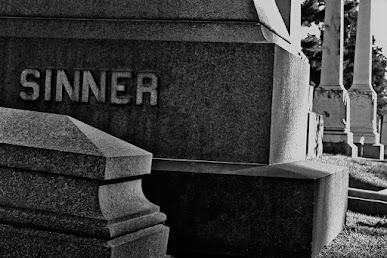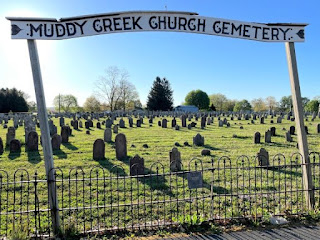This is an end-of-year, new beginnings post. There is a restaurant/bar in Philadelphia called “Charlie was a Sinner.” I used to work a few blocks away, but never went in. Never understood the name, though I’d always been intrigued by it. As a recovering Catholic, sinning is a familiar concept to me. A way of life.
So I was driving through center city Philadelphia last week with my twelve-year-old daughter, who is Jewish. She looked out the window, and said, “What does that mean?” I said, its probably an inside joke, maybe the owner called it that because of her friend Charlie? My daughter said, “No, I mean, what’s a ‘sinner?’”
I was speechless. I thought she was kidding. As a product of twelve years of Catholic education (I’m talking 1960s hardcore burn-in-hell Catholic conditioning), I am well aware of sin. We were taught that we were born with “Original Sin,” which could only be cleansed by Baptism. I was Baptized, and spent the rest of my life “sinning.” From grade school through high school, I confessed the mild ones to a Catholic priest in the Sacrament of Confession.
My wife is Jewish – and as a result, our daughter is too. Jews don’t believe in sin, the way Christians do. In fact, “in Judaism, it is believed that all humans enter the world free of sin.” (The Jewish Concept of Sin (learnreligions.com). What a concept of purity, huh? I never knew this. Our daughter has been attending Hebrew School for most of her life, and has basically been taught to do good things, rather than to not do bad things. Kind of takes the wind out of Neil Young’s sails, when he sings:
“Well, I was about as scared
as I could be.
I went and hid
behind the nearest tree.
Peeked out
from behind the branches.
Sinner!
Yonder stands the sinner
He calls my name
without a sound …”
- Yonder Stands the Sinner, Neil Young
But don’t get the idea that Jews have it easier than Christians – you know those ten commandments? Well, Jews have 613 commandments! Jews focus on missing the mark of goodness when they go astray. And sure, they do wrong and seek forgiveness just as Christians do. Jews, in fact, are encouraged during Yom Kippur, to seek out anyone they might have offended and sincerely request the person’s forgiveness (ref.). A bit more difficult, more humbling and effective, I would say, than confessing your “sins” to an anonymous priest.
“Greasy Stanley”
I want this blog to be about purity, about goodness. That New Years’ Resolution stuff brings me to the subject of “Greasy Stanley.” My dad, who died in 2004, used to like to tell this story at the turning of each year. When he was a young man, probably in the 1940s and 50s, there was a garage, a gas station/auto repair shop in Luzerne, PA. When you drove your car alongside the pumps to get gas, the owner, who my dad referred to as “Greasy Stanley,” would emerge from the garage where he’d been working on cars, to pump your gas. He always wore the same blackest, greasiest overalls imaginable. Hence the nickname.
The scene repeated itself all year, except on New Year's Day. Greasy Stanley bought himself one new pair of white overalls every year, and donned them on New Years’ Day. I’m sure it was quite a shock for people to see him in stark white clothes! As the days went on, the clothing got dirtier and dirtier. Greasy Stanley began each year pure as the driven snow, but then ever so gradually, returned to his old ways. Kind of like how people fail to keep their New Year’s resolutions. The point is, though, that he gave himself a fresh start every year.
I’m considering starting the new year like my daughter and Greasy Stanley. Don a new clean outlook focused less on sin avoidance and more on doing good. And if things get a bit dirty in the process, so be it.
Like Greasy Stanley, we all know we’re going to mess things up eventually. He never donned those overalls thinking they’d stay white for more than a day. It’s not really a hope for the future as much as it is a new beginning. Sure I’ll mess things up this coming year, but maybe I’ll approach 2022 more focused on doing good things. The words I saw yesterday might be a great mantra for the new year. They were stenciled on the back of a tractor-trailer I saw as I was driving up the turnpike. A company, oddly, called “Kane is Able” (it seems like so much of the world is focused on sin!) had these sage words to offer:
“BE KIND
BE CAREFUL
BE YOURSELF.”



















































